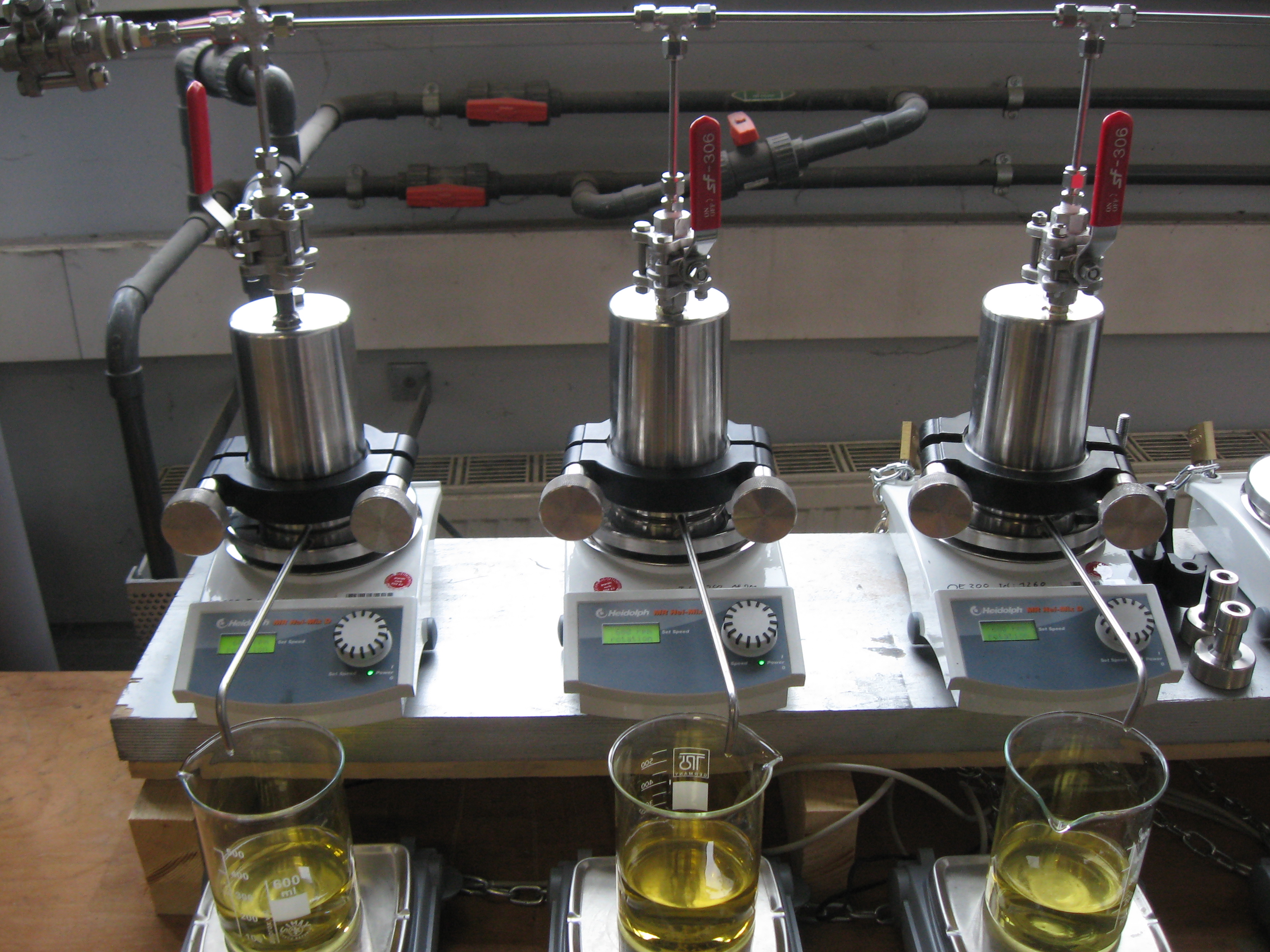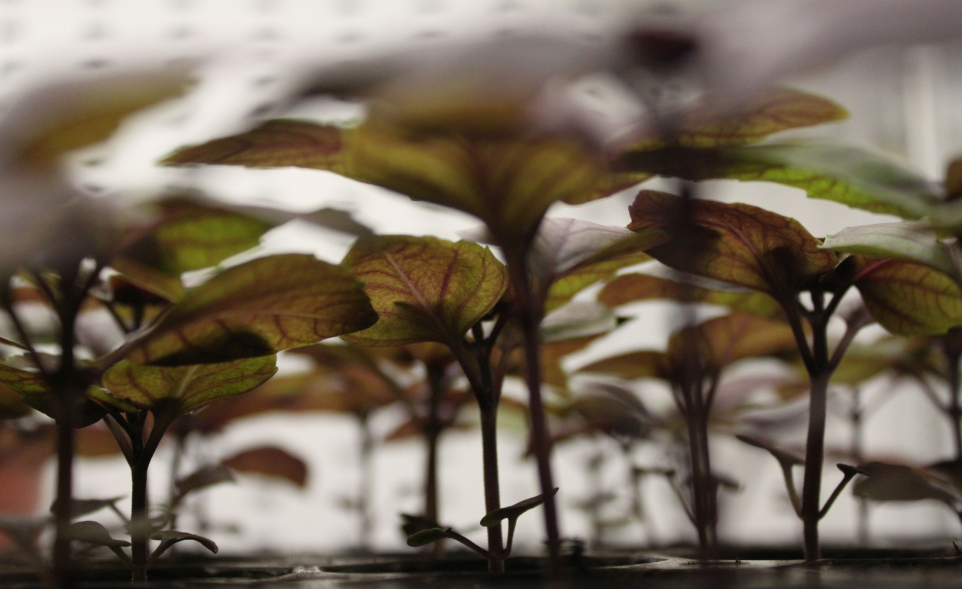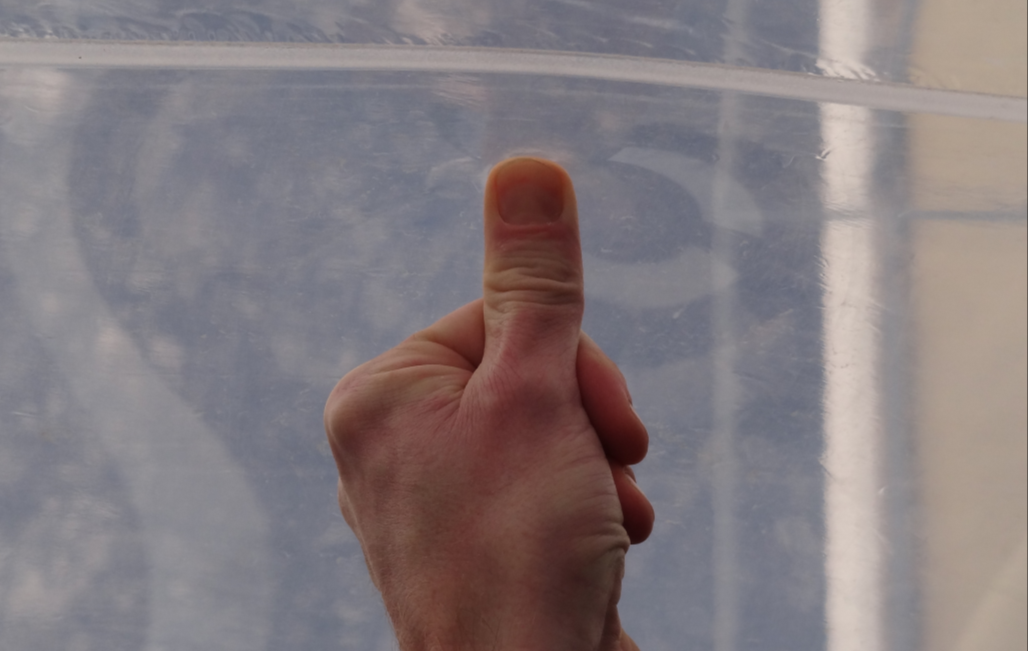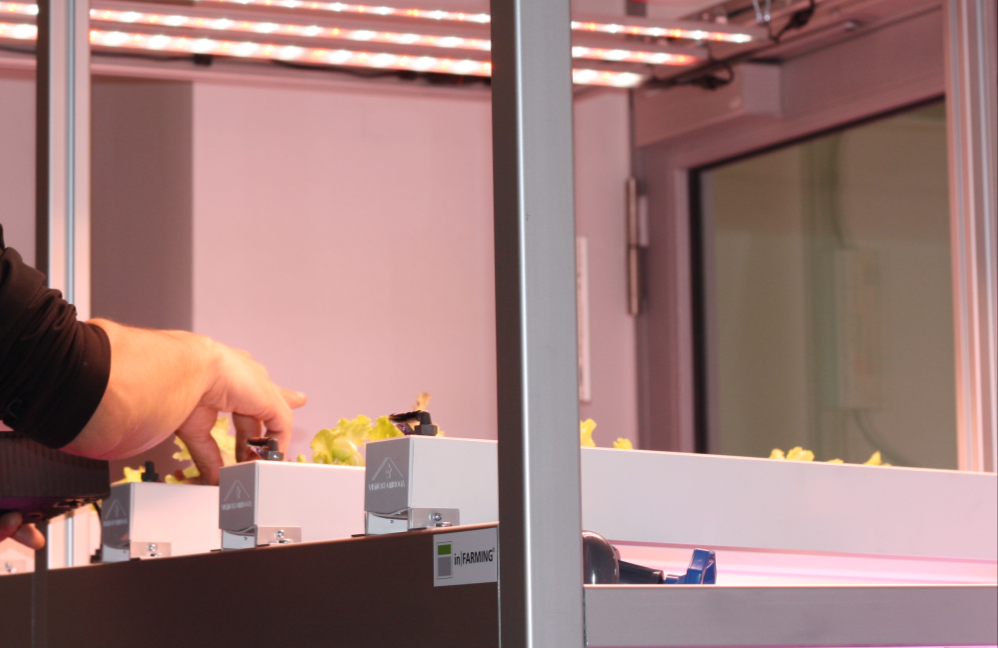The controlled cultivation of plants in greenhouses or integrated into buildings in vertical farms enables a sustainable and efficient supply of corresponding products to consumers.
The development activities at Fraunhofer UMSICHT focus on technical innovations that can lead to a wider use of controlled cultivation methods. Economically viable systems thus also enable applications in metropolitan regions or as isolated solutions, for example.

Every year, around 100 million tonnes of nitrogen, 40 million tonnes of phosphate and 20 million tonnes of potassium are used in agriculture worldwide. Due to the demand for fresh food in an increasingly growing world population, an average annual increase of 2-3 % per component is assumed [1]. At present, mineral phosphate fertilisers are mined in deposits of varying quality and size in just a few countries around the world.
Fraunhofer UMSICHT is working on targeted nutrient recovery, for example of phosphorus from secondary raw material sources, which can contribute to sustainable production in the agricultural sector. Development goals are building blocks and interfaces that make it possible to convert resources directly into high-quality, plant-available and harmless products.
[1] IVA, 2014: http://taspo.de/produktion/dungemittelverbrauch-nimmt-weltweit-zu/#.WCw6MmczWpo

Declining yields in the conventional cultivation of cucumbers, beetroot, tomatoes and the like, as well as ever decreasing cultivation areas and the consequences of climate change, are causing the demand for cultivation in protected cultivation (greenhouses or building-integrated) to rise steadily worldwide. Here, the yield potential is achieved primarily through innovative cultivation technology measures. One of the key site conditions for successful plant production is the availability of light. The requirements for quality, resource conservation and efficiency are also increasing in the cultivation of plants and are components of a sustainable agricultural economy.
Fraunhofer UMSICHT develops demand-driven plant lighting systems. The growth of plants is decisively influenced by light. However, photosynthesis does not require the entire sunlight spectrum. New, high-performance LEDs offer enormous potential in plant cultivation and production, as it is possible to emit only the required spectrum. In addition to developing the ideal lighting scenario for specific varieties, we are also working on adaptive lighting solutions.

The rapidly growing transparent surfaces in buildings, such as windows, roof glazing and architectural membranes, still have a significant need for development from an energy and climate technology perspective. For example, switchable polymer materials that switch their solar transmission depending on temperature have great potential for use in the horticultural sector.
Fraunhofer UMSICHT is developing polymer formulations as well as realising product prototypes with partners. Other areas of work include new concepts and technologies for solar and thermal protection in the greenhouse sector.

The system integration of plant cultivation methods into existing or new processes or infrastructures is a key factor in future, more sustainable production systems.
Fraunhofer UMSICHT is developing the corresponding process engineering modules and interface technologies for this, such as in the current Altmarktgarten project. In this project, secondary water and energy resources from the building are processed and reused in an optimised way for plant cultivation.
The optimisation of the yield per unit area, for example through the use of hydroponic vertical cultivation methods, is another focus of our work.